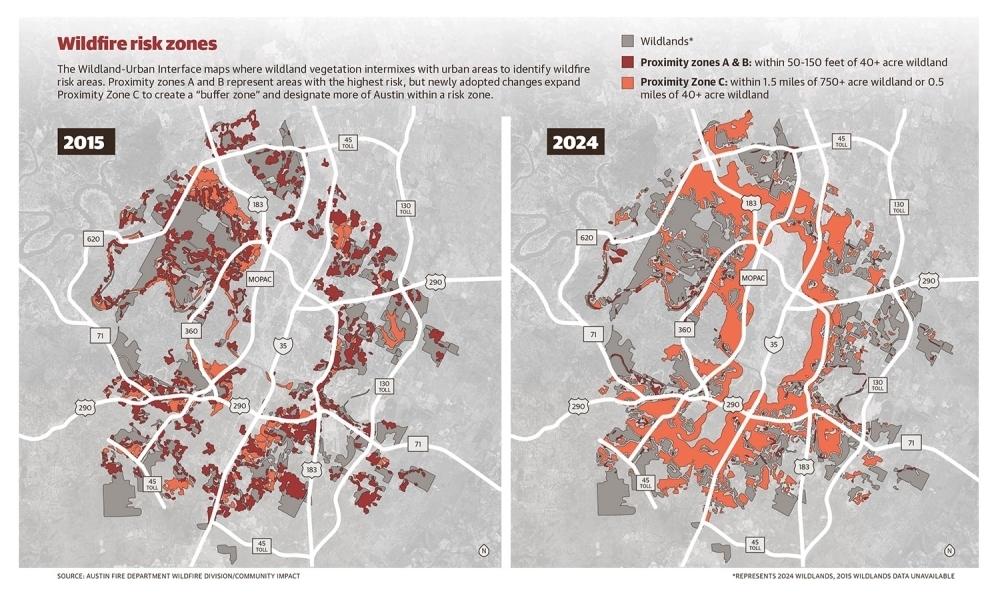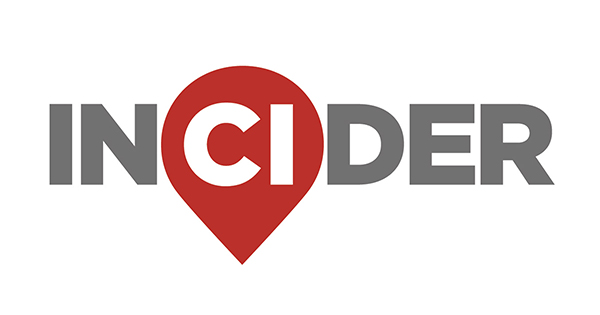Some background
In 2020, Austin became the first major city in Texas to adopt a Wildland-Urban Interface Code, or WUI. The code sets standards for home hardening, vegetation management and emergency responses where urban areas meet wildland to reduce the risk of wildfire damage.
In April, Austin City Council adopted changes to the WUI, increasing the amount of land in Austin considered at risk of wildfire.

What residents should know
According to city officials, the updated code’s home hardening requirements for fencing, roof materials, vent openings and appendages such as decks apply exclusively to new construction, which includes building additions or exterior remodels.
“While retrofitting is optional, buildings and homeowners are encouraged to voluntarily update their properties to better withstand the threat of wildfire,” officials said in a statement to Community Impact.
The updated code also created an Ember Ignition Zone, which requires properties within this zone to have a 5-foot-wide noncombustible area around structures and have no combustible materials or vegetation on the property.
Mike Inscore, Fireline Protection owner and former Travis County firefighter, said with new construction, the fire marshal's office is doing a good job protecting the community while not making people "spend a crazy amount of money."
However, some property owners may not have the money to retrofit or upgrade their property, he said.
"They've been priced out of their homes; they've lived here for 20-30 years, and they're the last little house left in their neighborhood; everything else has been torn down and rebuilt," Inscore said. "People like that are going to struggle because anytime they make any type of upgrades, the city is going to make them be WUI-compliant."
What’s being done
Austin Fire Department’s Wildfire Division offers free Structural Ignition Zone Evaluations, which provide recommendations for landowners on how to protect properties from wildfires.
Fireline Protection offers similar services, Inscore said. Homeowners can implement cost-efficient measures now such as adding ember guards to chimneys, gutters, and vents and joining a Firewise community.
“If the properties around you are protected, then your property is safe,” Inscore said. “If everybody's working together, and you've got these neighborhoods that are committed to doing the prevention and the fire departments know this, it helps them in the event of these big fires.”
Larger investments could include a property-wide sprinkler system, he said.
“Ideally, you don't want to rely on the municipal water supply,” Inscore said. “As we saw in [the Los Angeles fires], the fire department ran out of water. So, we actually have a system that can go on the exterior of the house.”
Something to note
Northwest Austin residents in particular have been “very proactive” with wildfire mitigation efforts in the last year, Inscore said, but demand has slowed this year due to significant rainfall events.
“That’s also what’s going to create a massive fuel load,” Inscore said. “Once people start trimming that overgrowth, there’s going to be a lot of material just sitting around, and if it dries out, that becomes dangerous.”
District 6 resident Rich Cardone voiced similar concerns with a buildup of brush piles along the Upper Bull Creek Greenbelt, but said Austin Parks and Recreation Department officials noted difficulties with fuel mitigation efforts due to the greenbelt’s topography, distance from homes and limited resources.
“It just seems like maybe there's a way to work through this so that we can be proactive,” Cardone said. “Having eyes on it all the time wouldn’t be a bad idea.”
PARD officials said the department’s fuel mitigation activities are determined by available budget and staffing and prioritized according to “a variety of indicators of fire behavior and vulnerability," and these activities will not be impacted by the WUI Code changes.
AFD officials say the department will continue to support local brush cleanup efforts on city-owned land along with controlled burns. Austin Resource Recovery offers on-demand brush collection, and Fireline Protection also contracts out for brush cleanup efforts.
“I always encourage people to have us haul the material off instead of mulching it because all that is just creating more combustible material,” Inscore said.





